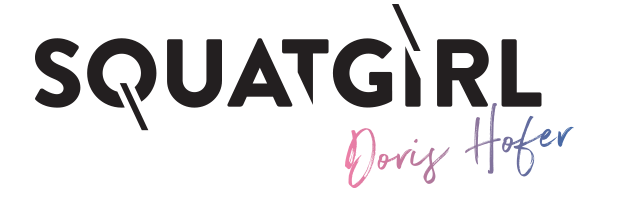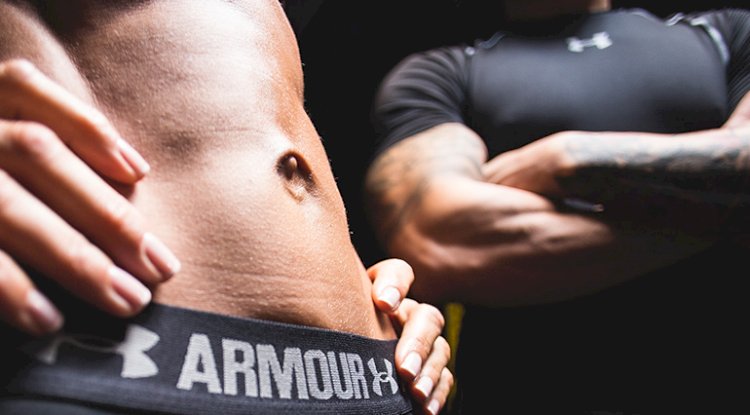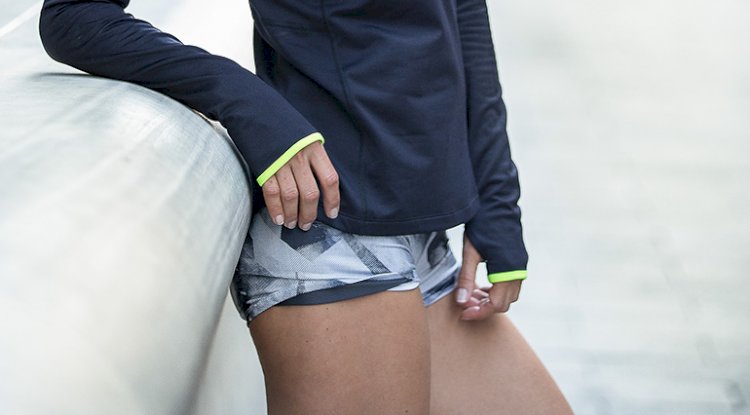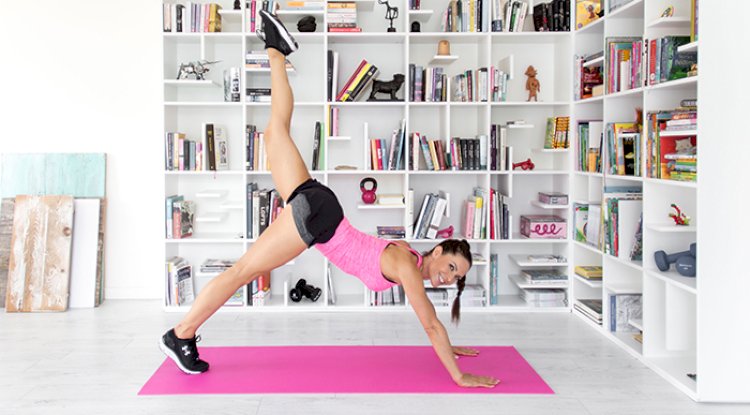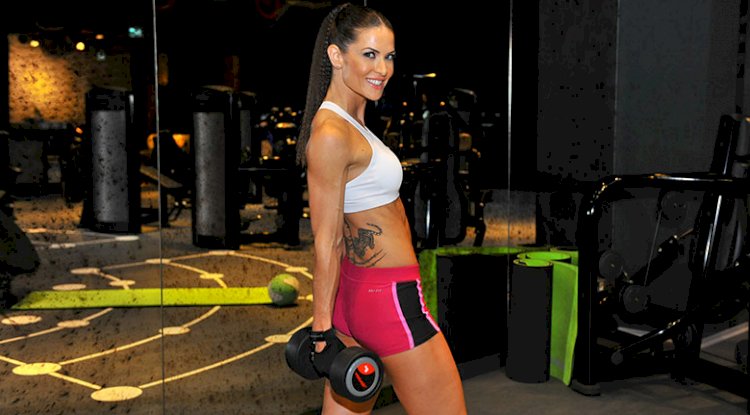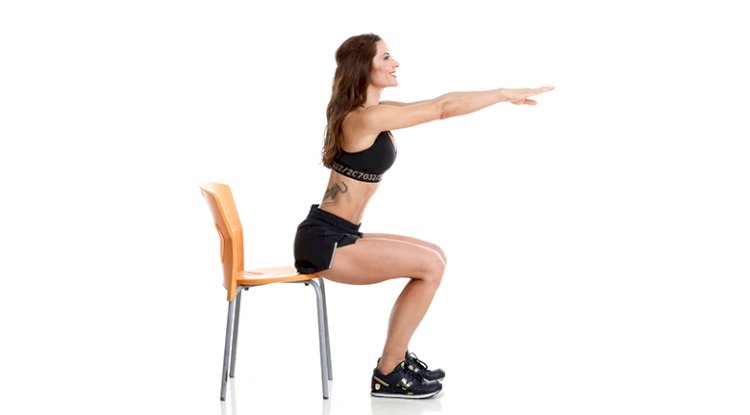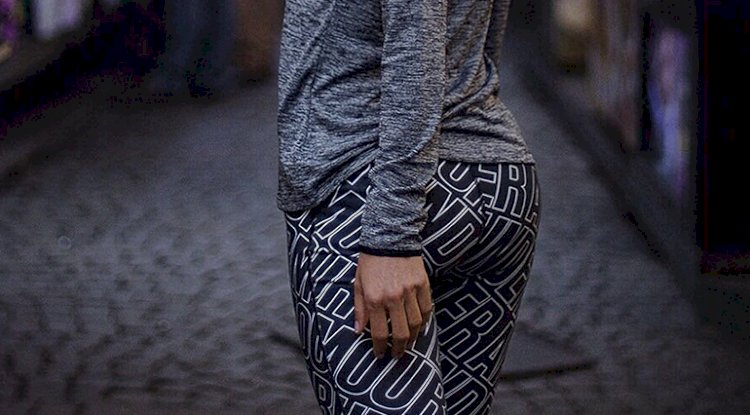Training with Hernia
The easiest way to prevent hernia is to keep your muscles strong and in doing so reducing the strain on your body.
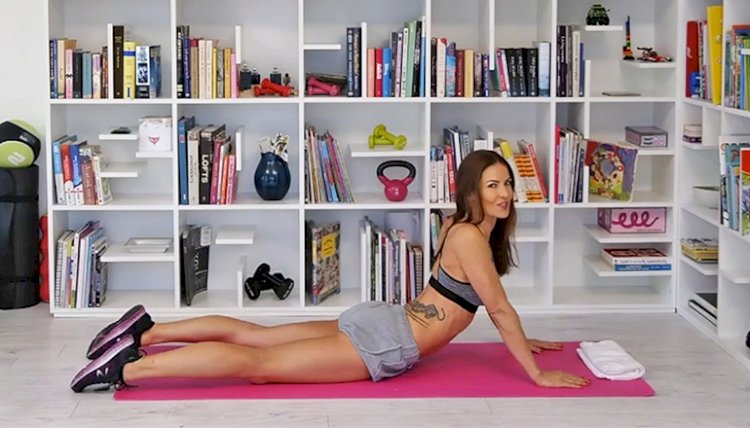
What is hernia?
There is an awful lot of different hernia types. I actually got one myself after the second pregnancy with Noah. The increased pressure in my belly caused my abdominal muscles to stretch or tear and not grow back fully together after birth. In some cases the intestinal or fatty tissue can poke through that hole in the abdominal muscle wall. But because I have strong abs, only a thin bulge remained above my navel. If you look closely, you can see it on some of my pictures. It didn’t bother me that my tummy muscles were not joining completely anymore, but I couldn’t stand my bellybutton that had popped out. I had my doctor put it back into place with a couple of stitches.
I have lots of friends and followers who suffer from discal hernia. The reason? Well when we were children, our spinal discs had a high water content, which helped to keep them flexible in their function of cushions absorbing shocks between the vertebrae. Once we get older, the discs begin to dry out and become more vulnerable to cracking and tearing. Harmless movements such as picking up a baby from the floor or simply turning to get into the car can cause a herniation.
Are there ways to avoid an operation?
People may have a herniated disc and not even notice it. In most cases the pain eases within six weeks but depending on the location of the nerve impingement, patients can suffer terrible pain and surgery may become inevitable. The good news is that in lots of cases, an operation won’t be necessary. Initial pain control includes ice application to ease inflammation, pain medication, muscle relaxants and heat therapy. Bed rest should be limited to 24-48 hours since immobility will lead to stiffness and more pain.
How to train with hernia?
Before engaging in any case of activities you should consult with your doctor. In general, light activities and frequent movement with rest breaks as needed are advised. Heavy lifting and strenuous exercise should be avoided. Try these exercises, but stop immediately if you feel any kind of discomfort. You should feel better after 1-3 months.
HERNIATED DISC EXERCISES
Lie down on your tummy. Bring up your upper body while resting on your elbows. Try to hold this position for 3-5 minutes. If you feel comfortable, holding it for that long, you may then move to do an extended arms version of the same exercise. Lock your elbows before you lower your body to the floor and push yourself up again for 12 times.
Lie down on your stomach. Place a towel or a small pillow under your hips. Extend your arms along your body. Now lift your upper body off the floor, contracting your low back muscles and hold for 3 seconds. Repeat the exercise 12 times. Your movements should be gradual and controlled.
Start on your stomach with a towel or small pillow under your midsection. Extend your arms in front of you and contract your abdominal muscles. Slowly lift your left leg and right arm off the floor. Hold this position for 3 seconds. Then repeat with your right leg and left arm. Repeat 6-12 times each side and ensure that your tummy muscles are contracted throughout the exercise.
ABDOMINAL HERNIA EXERCISES
" scrolling="no" src="//www.youtube.com/embed/_Wf9G1cUIcI?feature=youtu">
Lie down on your back on a yoga mat. Now bring your right knee up to your chest. Hold it with your hands holding your elbows and count to 5 while calmly breathing in and out. Then stretch your right leg and repeat the same exercise with the left one. Next, rise both legs to your chest. Repeat 3×12 times to increase the blood circulation and stimulate the nerves.
Lie down with extended legs and as you exhale tighten your abdominal muscles, pushing your bellybutton towards the floor and flattening your low back. Hold the position for 5 seconds. To know if you are doing the exercise right, place your pinkie on your hip bone and your thumb on your lowest rib, then tighten your abdominals. The space between your fingers should get smaller. Repeat for 12 times.
Lie down on your back, your arms are extended along your body, hand palms facing down. Slowly raise both legs to about 30-40 degrees and try to hold this position for 10 seconds for 12 times. It is important to control your breathing while counting.
Lie down on your back and place your arms next to your body. Exhale and raise your head while lifting your shoulders off the floor. Hold for a moment before you carefully roll back down while inhaling. Repeat 12 times.
Lie on your back and raise your legs into half a shoulder stand, bending your knees if necessary. Support your hips with your hands and stop when your trunk is at an angle of 45°. If the strain on your hands is too great, lower your legs toward your head. Hold this position and breathe normally. Count to 10, then bend your legs and release your arms before you roll back into the original position.
The easiest way to prevent hernia is to keep your muscles strong and in doing so reducing the strain on your body. Maintain a healthy body weight and lift objects with a proper squat movement, not with your back. Avoid lifting weights that are to heavy for you and walk regularly.
